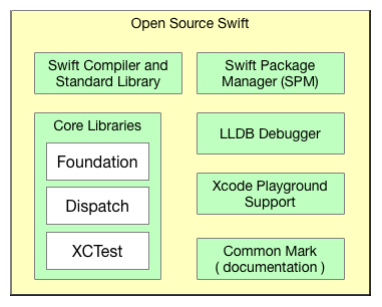Swift is a high-performance modern programming language that was first announced at the Apple World Wide Developers Conference (WWDC) in September 2014. Thanks to Apple's strong support and endorsement from the developer community, Swift has become one of the fastest growing new languages in computer science history. Swift 2.0 was released in September 2015, followed by Swift 3.0 a year later, and Swift 4.0 in September 2017. There have been two additional releases: Swift 4.1 in March 2018 and Swift 4.2 in September 2018.
As a modern language, Swift offers a clean syntax and many modern programming language constructs. Even though Swift is inspired by many other popular programming languages, Swift is an independent language completed with all the core features of a modern language. We will find the familiar low-level constructs in Swift, such as data structure, classes, functions, enums, as well as many useful modern features, such as protocols, optionals, closures, and generics.
Type safety is enforced from the ground up in Swift. The emphasis of type safety shifts the detection of many nasty errors from runtime to compile time. As a result of dramatically reduced runtime errors, Swift developers enjoy relatively increased productivity and an ease of programming.
Swift keeps many of the constructs found in modern programming languages, but also eliminates some features that are frequently seen in other languages. One example is that Swift uses modules instead of headers, eliminating code duplication often seen in using headers. Moreover, Swift does not support exceptions and an automatic garbage collector. In Swift, memory safety is ensured by default. Instead of a garbage collector, Swift uses a thread-safe Automatic Reference Counting (ARC) for an object's life cycle management.
As a compiled language, Swift is very fast at execution. The source code of Swift is first checked for type safety, then compiled into a machine-independent intermediate code in a Low Level Virtual Machine (LLVM) for optimization, and eventually used to generate machine code that is native to the system. Swift's execution performance often matches that of modern native programming languages and exceeds that of interpreted programming languages.











































































